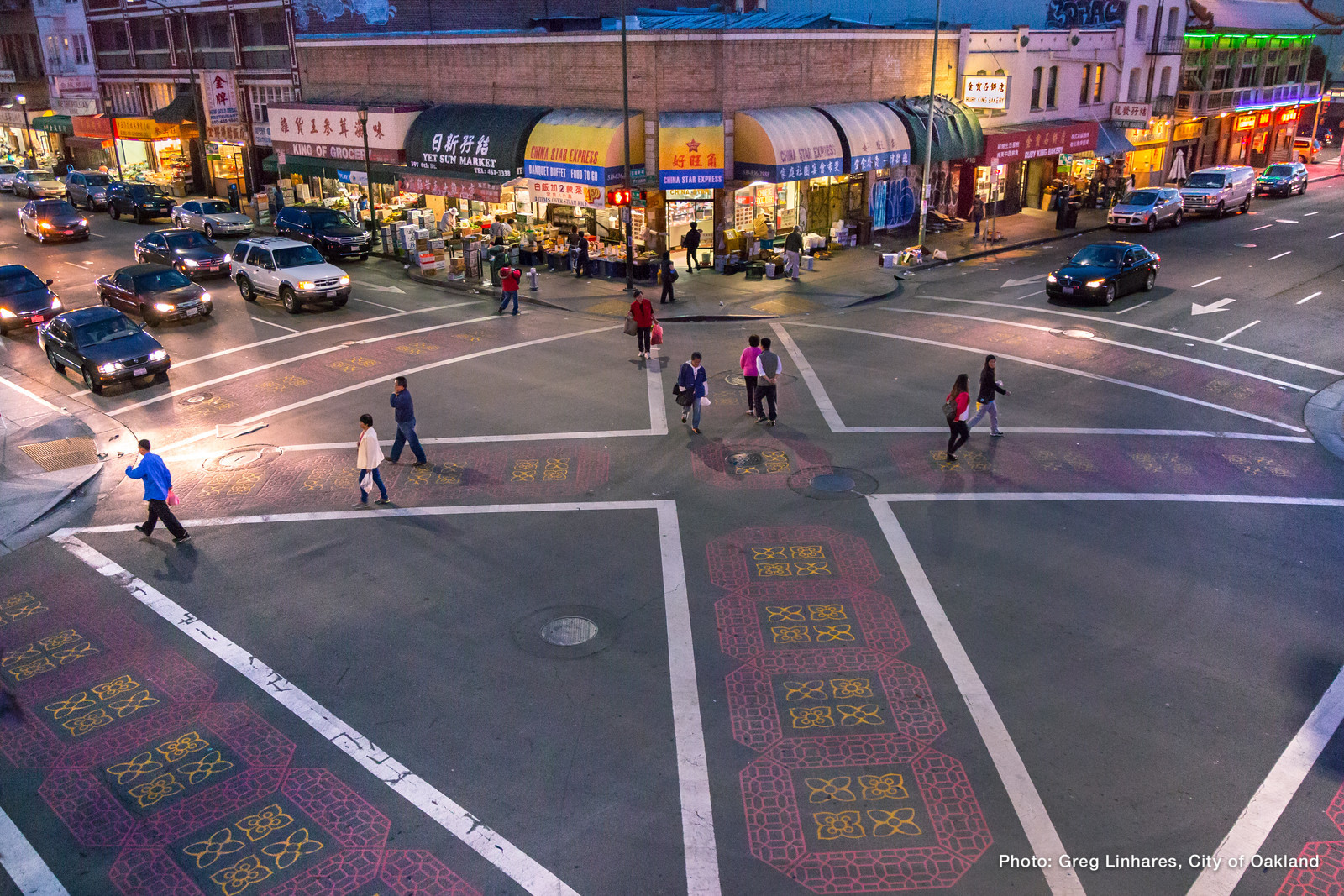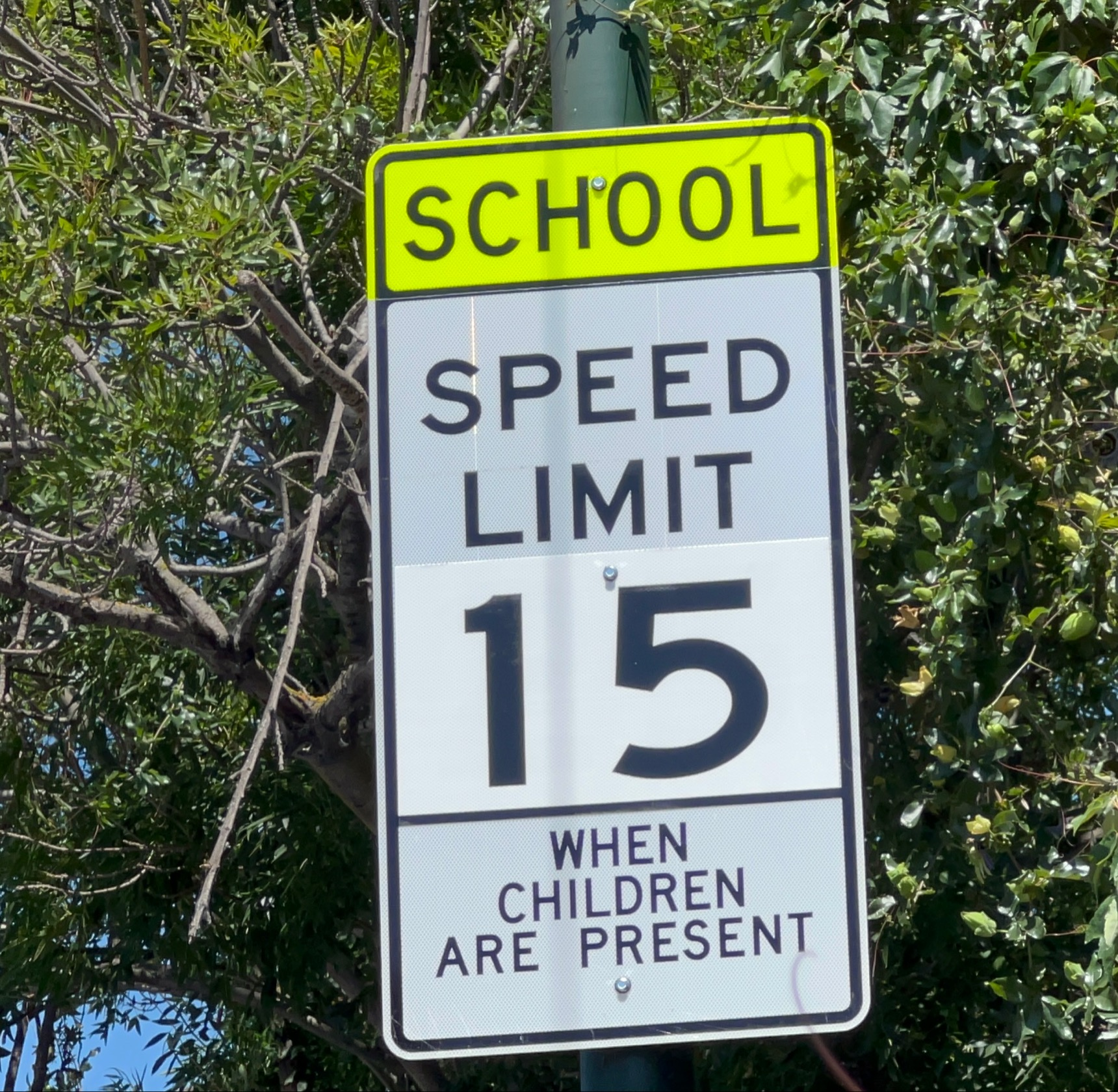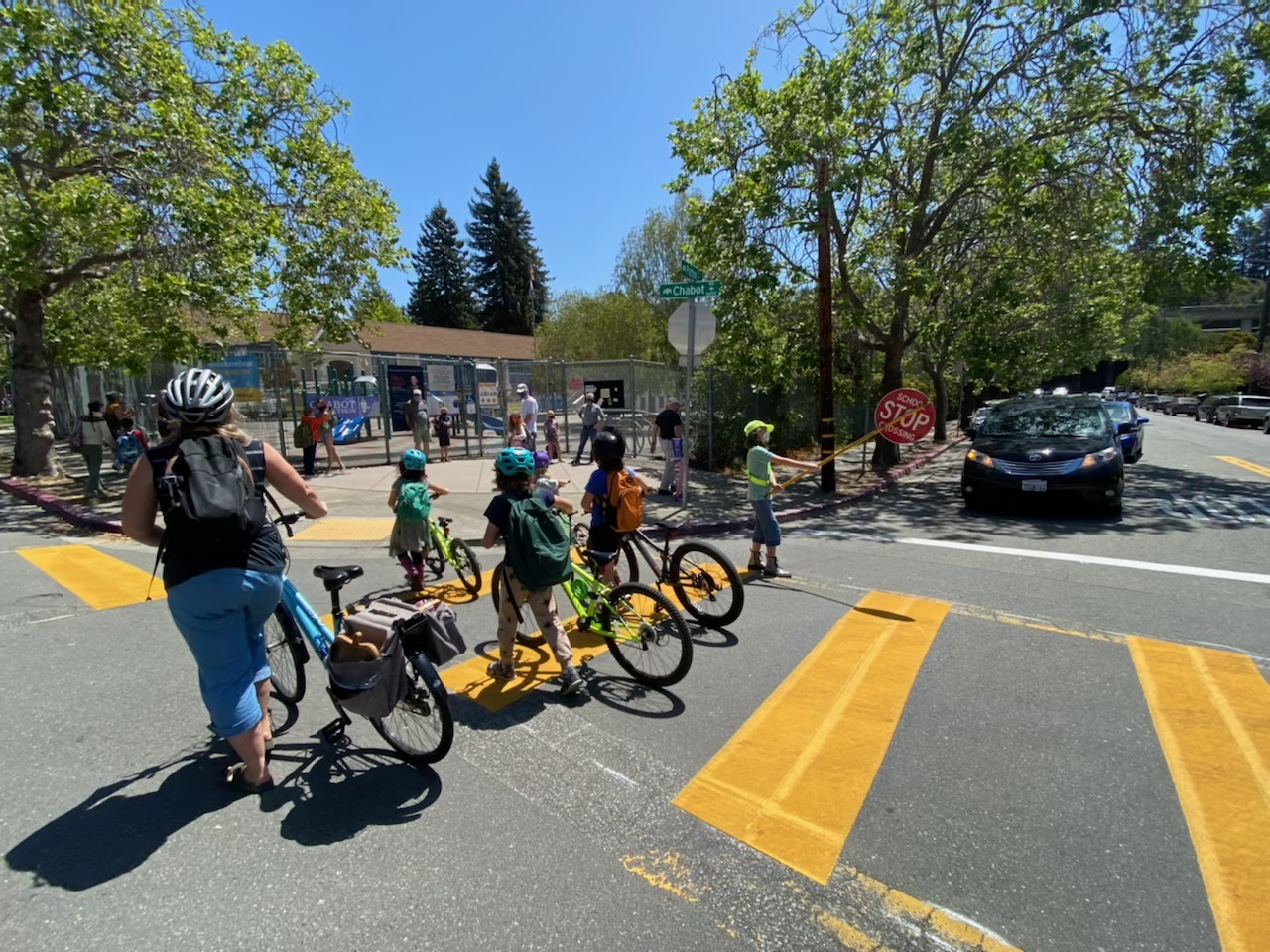Safe Oakland Streets' goals are to:
- Prevent severe and fatal crashes and related disparities impacting Black, Indigenous, and People of Color (BIPOC) communities, seniors, people with disabilities, and low-income populations;
- Eliminate severe and fatal injury inequities including racial disparities impacting BIPOC communities that exist today in Oakland; and
- Inform effective and equitable safety strategies that prevent injury and injury inequities, and do not have adverse equity impacts on BIPOC communities, seniors, people with disabilities and low-income populations
SOS assessed the most effective and equitable strategies to achieve our goals.
Safe street design plays a critical role in encouraging safe traffic behaviors and preventing severe and fatal crashes in the first place.
- For a sense of the types of tools we use to increase safety, take a look at the "Crash Prevention Street Design Toolkit" in the documents section above.
- To see a list of safety projects under construction this year in Oakland, see "2021 Traffic Safety Projects" in the documents section above
We're prioritizing safety investments on the High Injury Network and in communities of concern across virtually all of our street redesign efforts at OakDOT, including:
- Capital Improvement Plan (CIP): The City's CIP outlines our major capital investments. From a transportation perspective, these are our most transformative projects that can help turn a high injury corridor into a thriving, vibrant place. In the most recent CIP, OakDOT ensured that all transportation improvements were ranked based on a number of factors that the community identified as important. Two of the highest ranking factors included equity (whether a project serves a community of concern) and safety (whether or not a project addresses a high injury corridor). OakDOT is working on dozens of projects across the High Injury Network. Some of these major projects are listed here: https://www.oaklandca.gov/resources/active-major-improvements-project
- Implementation of the Pedestrian and Bicycle Plans: The Bicycle and Pedestrian Program works to implement the City's Pedestrian and Bicycle Plans, using data driven decisions and quality street design to enhance safety.
- Prioritizing the High Injury Network in the Paving Plan: the Paving Plan touches the largest number of miles across the City of Oakland. The paving plan prioritizes strategies to reduce racial inequities and streets on the high injury network, creating a cost-effective strategy to implement striping improvements that can effectively reduce crashes.
- School Traffic Safety: Traffic safety near schools is critical for our families, children, and our communities. On this page find the latest news and important background on our work to make it safer to go to and from Oakland's schools.
- Safe Routes to Schools: the City of Oakland partners with the Alameda County Transportation Commission (ACTC) to deliver safety improvements around schools. ACTC plans safety improvements around schools (listed here), and OakDOT designs and delivers those improvements. In addition, OakDOT implements a school crosswalk striping program.
- Neighborhood traffic safety requests: OakDOT receives approximately 800 traffic safety requests from community members through our 311 system each year - a number that far outweighs staff capacity to investigate safety concerns and design & deliver solutions. We prioritize these requests based on crash history, equity, and proximity to schools or senior centers.
- Rapid Response Projects: while OakDOT works to proactively prevent crashes, we still face two severe or fatal crashes on average every week. When severe or fatal crashes take place that could have been prevented, OakDOT deploys crash prevention tools immediately. Examples of rapid response projects include Foothill & 22nd Ave, Foothill & 26th Ave, and Harrison & 23rd St.


